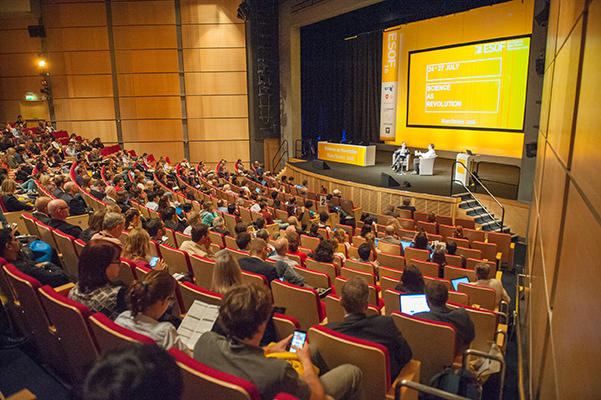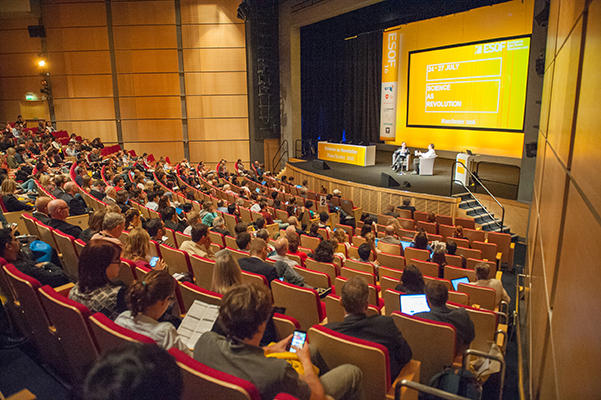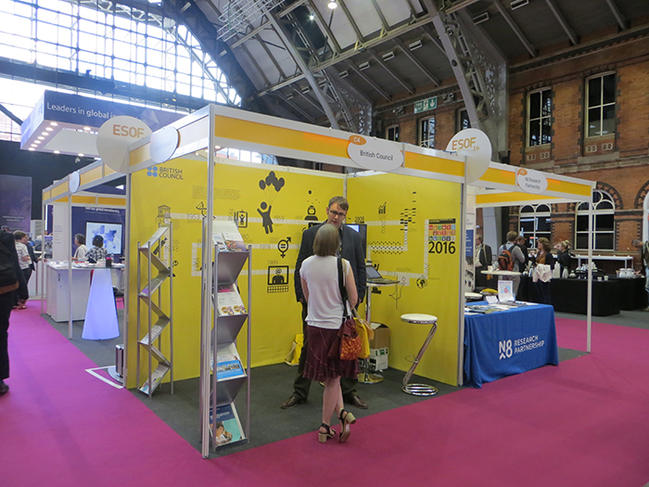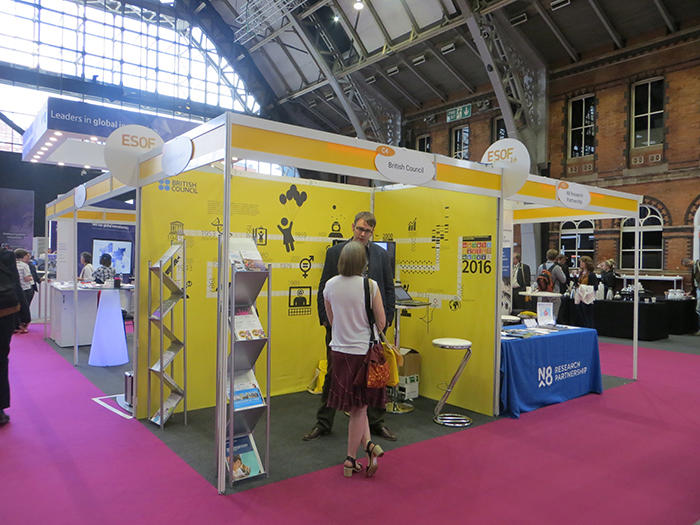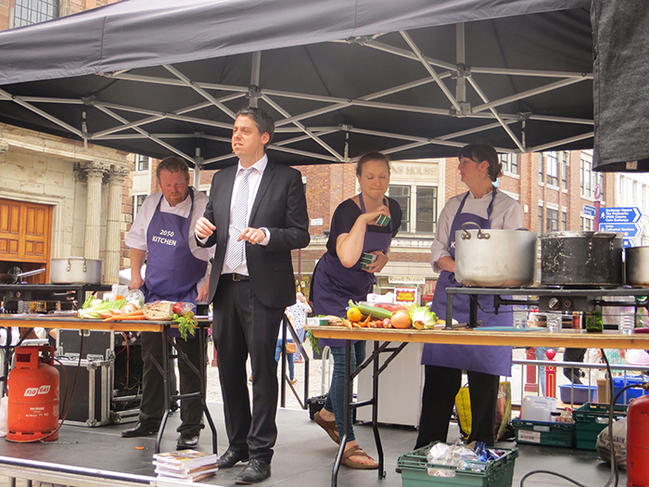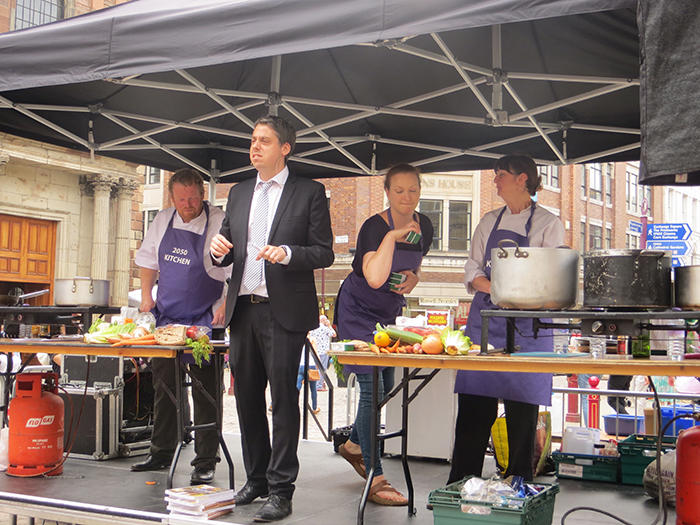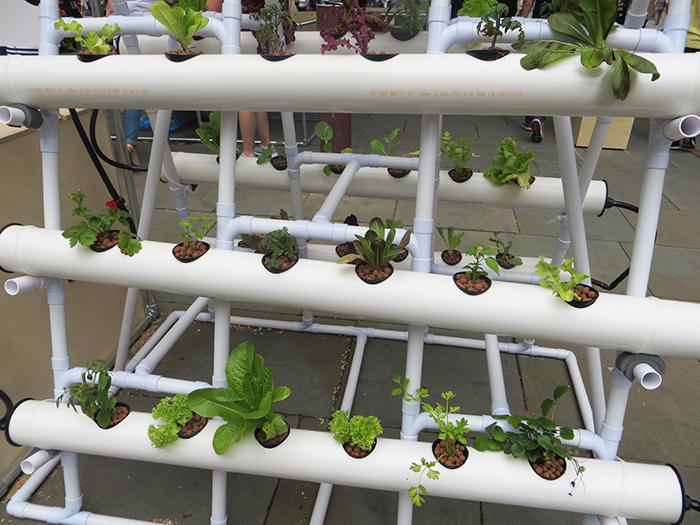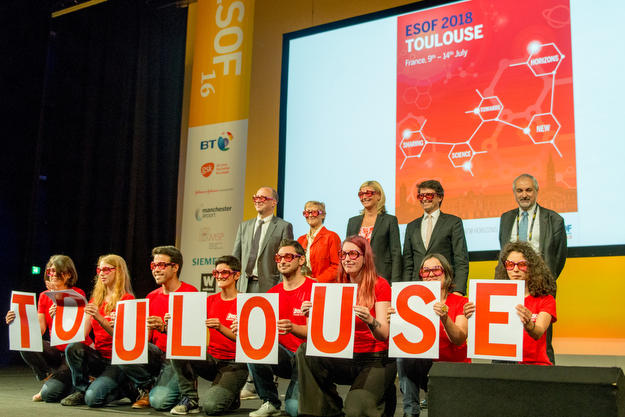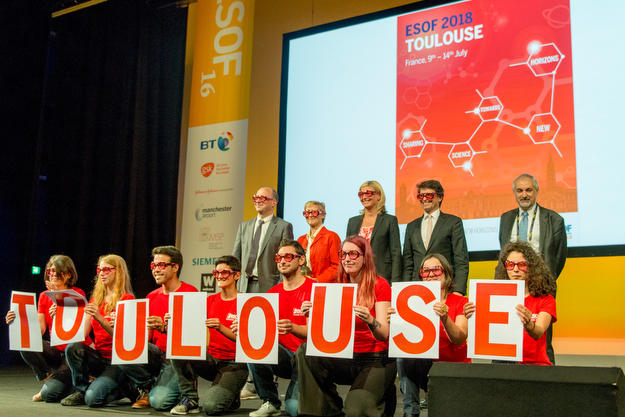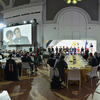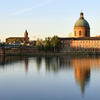You are here
Celebrating Global Science at ESOF

If Manchester brings to mind some of the best remembered episodes in the history of football, its walk of fame extends far beyond the confines of Old Trafford, to entirely different fields. No matter their talent, Bobby Charlton and George Best are not the only celebrities to have made the city proud—nor the first. Home to some of the most illustrious names in science, from the physicist James Prescott Joule to the mathematician Alan Turing, Manchester was an inspired choice for the 7th edition—and first to be held in the UK—of the EuroScience Open Forum in July this year.
Birthplace of the Industrial Revolution and first test-tube baby, the vibrant northern hub pulled out all the stops to welcome visitors to the biennial event. At the airport, frescoes proudly advertised the city's scientific vocation and achievements, while the first ESOF t-shirts and bright yellow shoulder bags, which would dot the streets over the following days, could already be spotted in the terminal. "It is a fantastic opportunity for Manchester to hold this event, and a chance to showcase the city, as people are coming from everywhere," Carl Austin-Behan, the Lord Mayor, told CNRS News.
Worldwide cooperation
No fewer than 3000 registrants from 83 countries had flocked to the event's 150 sessions, which brought together 700 speakers from across the spectrum of disciplines. Scientists of course, but also teachers, industrialists and policy-makers had come to "collaborate in the name of science," as the Master of Ceremonies Brian Cox, distinguished professor of particle physics, author, television presenter and "proud Mancunian," put it at the opening function.
Collaboration indeed was the key word at ESOF—and one of its main goals, whether for discussing scientific breakthroughs, finding applications for research results, or building partnerships with industry, stressed Dame Nancy Rothwell, professor of physiology, ESOF 2016 champion and vice-chancellor of the University of Manchester. "Working in our labs, we can lose sight of our purpose, which is to better understand the world around us," Cox reminded a large audience.
No stone was left unturned to this ambitious end, as testified by the wealth and breadth of the sessions, which focused on subjects as diverse as sustainable development, gravitational waves, nanomaterials and medicine, or big data—not to mention the cutting-edge results presented throughout the event, from the improved health and longevity of cloned sheep to the development of frozen minibrains, notably for use in the study of the Zika or HIV viruses.
Yet to serve a purpose, breaking science must find applications, hence the need to establish partnerships with industry, as illustrated by the ESOF Exhibition, run in parallel with the conference sessions. Acting as a science-to-business platform, it brought together a wealth of pharmaceutical, energy, and IT companies, but also universities, representatives from EU institutions, research agencies, and funding bodies, beneath the high glass vaults of the Manchester Central Convention Complex. As in the days of the Industrial Revolution, what was once a busy train station hummed with activity and bristled with excitement.
Communication and popularization
Excitement at scientific advances, along with the desire to share it, were other key drivers at ESOF. "A fertile ground for the exchange of ideas and the development of new ones," as stressed by the naturalist and broadcaster Sir David Attenborough, the forum also provided the scientific community with a unique opportunity to communicate and engage the public. "ESOF is at the interface between science and society," said Sir Mark Walport, professor of medicine and UK Government Chief Scientific Adviser. "Science must explain itself to society, and continue to inspire."
This was the very aim of the week-long "Science in the City Festival," coinciding with the conference, whose string of public-oriented workshops and experiences scattered across the city centre attracted 20,000 visitors a day, including lots of children and teenagers.
The 40-odd pop-up events touched on a wide variety of subjects of interest to society, from laser technology to human cells and ageing to a competition for mini-rovers designed by engineering students from around the world. On an earth mound representing Mars, the robots were tasked with measuring the temperature, Ph, humidity and carbon content of the miniature "Red Planet," as well as collecting and identifying samples of gypsum, limestone and basalt extracted from the soil.
A crucial and highly topical issue, climate change was the focus of a series of performances. At the "Climate Change Café," professional cooks had ten minutes to make a meal with a limited number of ingredients (and lots of spices for zest), depicting a scenario likely to become reality by 2050, as global warming causes many foods to disappear. Samples of "crops of the future" requiring little water (such as sorghum, millet and sweet potatoes) and soil were grown on a square, next to the Café.
To introduce children to science, the Museum of Science & Industry hosted representatives of the EU research fellowship programme Marie Sklodowska-Curie Actions (MSCA), who helped aspiring scientists extract DNA from strawberries. A few steps away, using building blocks, budding researchers learned to assemble the honeycomb network characteristic of graphene, the wonder material that was first isolated in Manchester and earned Andre Geim and Konstantin Novoselov, its discoverers, the Nobel Prize in Physics in 2010. Meanwhile, two sweet-faced NAO French-designed humanoids, activated by sound and touch, were stealing the show as they sat down, stood up or danced to order. Enough to "motivate young people to become scientists," the stated objective of the organizers. "From an early age, children are taught coding, they look at atoms and see robots do things. I wish I had had the same chance," confided the Lord Mayor.
On an equally entertaining note, the "bluedot festival," held a 40 minute drive from Manchester at the Jodrell Bank Observatory, in Cheshire, combined astronomy debates and presentations, interactive exhibits and performances by Jean-Michel Jarre, Underworld and Air. Experts and academics mingled with musicians, authors and the public in a relaxed atmosphere. "Science is at the heart of culture," said Tim O'Brien, professor of astrophysics, associate director of Jodrell Bank and leader of the festival. "We hope that the bluedot will become an annual gathering—a sort of new Glastonbury!"
Transcending borders... and politics
A wish shared by Dame Nancy Rothwell. "Public events have gone very well, and we want to build upon those," she told CNRS News. "Drawing inspiration from ESOF and based on what worked best, we could organize other types of functions in the future." Manchester welcomes "any opportunity to extend and build links with people," stressed Sir Richard Leese, City Council leader. Home to 10,500 non-EU and 2500 EU students, "the city has experienced an economic revival in the past decade, thanks to people from across the world, and is equally as diverse as London."
European at heart, the northern metropolis remains optimistic despite the result of the recent referendum in favour of leaving the EU. "Even though the vote is not what Manchester wanted, we are not aware of any impact on ESOF, nor of anything concrete as yet," said Dame Nancy. "It is now even more important to use ESOF 2016 as an opportunity to have deep and meaningful discussions about the new situation we find ourselves in and how the European science community meets the many challenges ahead," the organizers declared. Despite the UK government's assurances that research grants would be maintained and the country's science spending protected, "money is less important than mobility," stressed the champion of the 2016 edition. "International exchanges—of ideas, discoveries and people—are the most essential."
A viewpoint echoed by Sir Richard: "The UK is not withdrawing from European science. Scientific excellence is based on collaboration. UK scientists have always reached out to colleagues outside and vice-versa. We want to continue to collaborate with the European scientific community and contribute to EU research projects."
To achieve this, and because "science is global," the government must establish "efficient and rapid ways of bringing people to the UK," advocated Venki Ramakrishnan, president of the UK Royal Society since December 2015 and laureate of the 2009 Nobel prize in Chemistry for his work on the ribosome. "The reason why scientists were so strongly in favour of 'Remain' was the possibility to recruit from a wide pool of researchers," he pointed out. This includes those from overseas, making it necessary to facilitate visa procedures, which "should be straightforward."
Concerned by the consequences of the Brexit vote, UK researchers were reassured by EuroScience President Professor Lauritz Holm-Nielsen that their European counterparts will "work as hard as possible to ensure that future research will include British colleagues" in the aftermath of the referendum. "No border will be closed to science. The human brain will reign freely and imagination is our limit." This is in line with the position of the National Center for Scientific Research (CNRS), recently expressed by its President, Alain Fuchs, in an open letter to the UK scientific community. "The European research landscape , our common wealth, has been built with the help of British academics and scientists... The CNRS cannot agree to miss out on scientific cooperations that have lasted for so long without failing in its basic missions and endangering the future of fundamental research," he said. The CNRS therefore proposes to hold a summit bringing together top level UK and French scientists to "come up with pragmatic solutions" to continue working together.
Toulouse
"Sharing science," precisely, is the motto of the 8th edition of ESOF, which the Toulouse team is already hard at work preparing. "ESOF 2016 was a success. Now we need to showcase Toulouse's own scientific culture," the organizers say. "We are highly motivated to take up the challenge, with the support of our partners and thanks to our strong European and international scope, the involvement of the scientific community and that of all the science and innovation players that interact with society," says Anne Cambon-Thomsen, CNRS senior researcher emeritus and ESOF 2018 champion. Their predecessors in Manchester are more than willing to share their experience and lend a helping hand. "We wish Toulouse all the very best," the Lord Mayor told us. "No doubt they'll take the baton with pride."
Explore more
Author
Valerie Herczeg is a CNRS bilingual journalist who also heads the translation department of the CNRS Communications Department.


